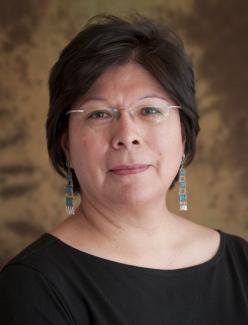
Indigenous Peoples have cultural and spiritual relationships with the land, forests, and ecosystems that are their homelands, and which have sustained their lifeways since time immemorial. This deep, intricate relationship of understanding and responsibility defines Indigenous Peoples’ identities and cultures and guides their stewardship through both traditional and new forms of sustainable practices. It is estimated that Indigenous territories contain 80 percent of the earth’s biodiversity. For Indigenous Peoples, conservation of biodiversity is an integrated part of their lives and viewed as an essential and functional part of the landscape in which they live. As extractive industries worldwide increasingly encroach on Indigenous lands, Indigenous Peoples are strengthening their efforts to resist these forms of development and protect their remaining lands and resources through legal instruments and systems such as the UN Declaration on the Rights of Indigenous Peoples. Indigenous knowledge and management systems represent critical, yet untapped, resources in global conservation efforts.
In this issue of the CSQ, we focus on efforts by Indigenous communities to protect Mother Earth’s remaining resources. Speaking to a conservation policy that has violated the rights of Indigenous Peoples, UN Special Rapporteur on the Rights of Indigenous Peoples, Victoria Tauli-Corpuz, makes it clear that all conservation efforts must take a rights-based approach and respect the rights of Indigenous Peoples. She writes, “Indigenous Peoples have their own traditional protection systems, they have their traditional governments where laws and policies regarding how to better protect territories are being shaped and enforced.” Additionally, securing land title by Indigenous communities is instrumental to effective conservation work. The case of Pueblo Chajoma’ in Guatemala illustrates how after years of persistence, Chajoma’ people have successfully recovered their communal lands. Securing Indigenous Peoples’ rights to land and resources ensures greater ecological conservation.
Ramona Peters addresses the need for an Indigenous perspective in conservation work. She states, “ The disconnect between Western science and traditional knowledge has caused the land to be abused. Characterization of plant life only around what benefits humans can derive reminds me that Westerners have been charged with the mission to dominate the earth through the 1452 papal bull of Pope Nicholas V.” Redefining conservation through an Indigenous lens, Ka‘imi Hermosura speaks about the obligations of being a good environmental steward that stems from Native Hawaiian cosmology: “ There are many responsibilities in growing taro, but also there is an exchange of mana, or chi, because you love to do it.” And Elizabeth (Tis) Peterman raises concern over the impact of large-scale mining on the Tlingit sacred headwaters and the resulting loss of food security, warning that “ The short term gain of these mines is at odds with our long term survival. Mines and clean water are not compatible.”
In order to create a sustainable future for biodiversity, conservation efforts worldwide will critically depend on the active and effective engagement of Indigenous Peoples. They will require a fundamentally changed view and practice of conservation that respects Indigenous lands and their lifeways. We must respect Indigenous Peoples’ rights to their lands and their traditional land use, knowledge, and science in order to protect our greatest resource for life—Mother Earth.
In Solildarity,
Suzanne Benally, Executive Director
(Navajo and Santa Clara Tewa)
